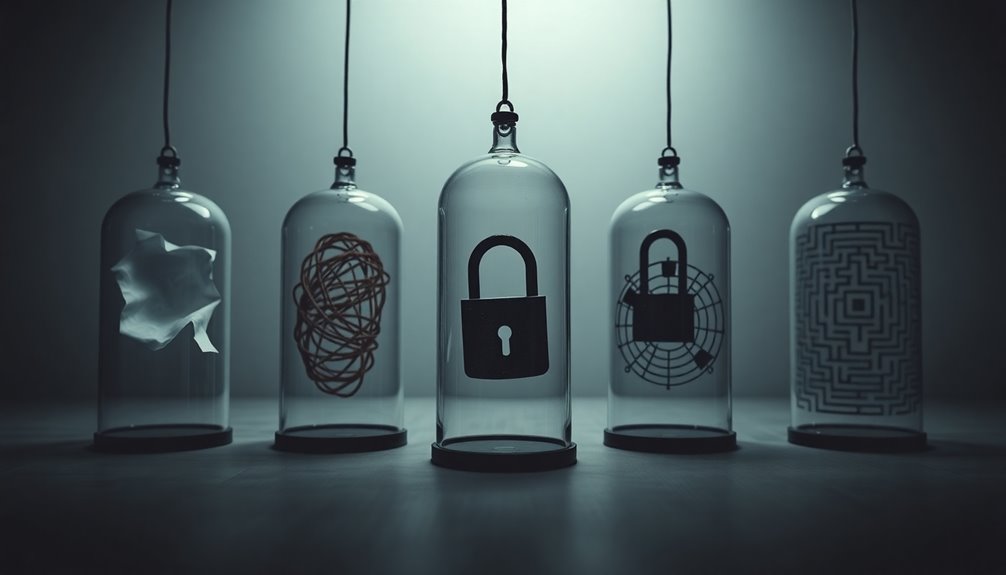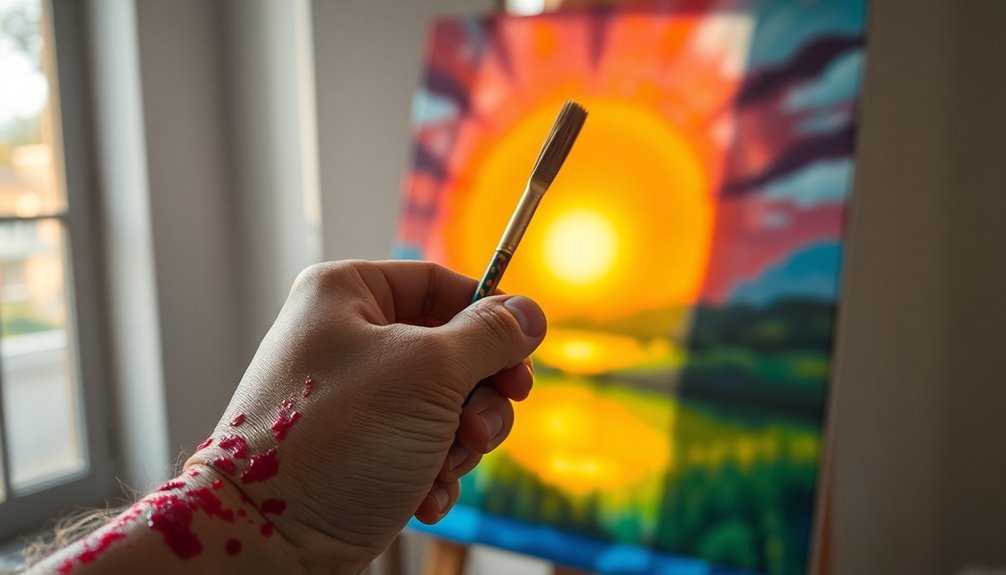Neuroscientists identify key triggers that lead you into the flow state, including focused attention, clear goals, and a supportive environment. Mindfulness meditation helps you sharpen your focus and calm your mind, making it easier to achieve flow naturally. Setting specific, achievable objectives and recognizing small milestones keep you motivated and engaged. When all these factors align, time seems to fly, and your productivity soars—if you want to explore how to activate these triggers, keep going.
Key Takeaways
- Mindfulness meditation reduces mental distractions, enhancing focus and increasing the likelihood of entering flow states.
- Clear, achievable goals activate the brain’s reward system, facilitating focus and motivation necessary for flow.
- Supportive environments and optimized external stimuli create mental conditions conducive to transitioning into flow.
- Small milestones and immediate feedback maintain engagement, sustain attention, and prevent fatigue during tasks.
- Combining mental clarity techniques with goal setting sharpens concentration and promotes peak performance in flow.

Achieving a flow state often feels effortless once you know what triggers it, but reaching that ideal zone requires understanding the key factors that set it in motion. Neuroscientists have identified several mental and environmental elements that help you slip into this highly focused, productive state. Among them, mindfulness meditation plays a significant role. When you practice mindfulness meditation regularly, you train your brain to stay present and aware, which reduces distractions and enhances your ability to concentrate deeply. This heightened awareness allows you to recognize when you’re approaching a flow state, making it easier to intentionally cultivate it. By calming your mind and sharpening your focus through mindfulness, you create the mental conditions where flow naturally occurs. Additionally, engaging in vetted techniques and tools can further support this process by optimizing brain function and focus. Another essential aspect is goal setting. When you set clear, achievable goals, your brain gets a roadmap for what you’re working towards, which fuels motivation and sustains your attention. Neuroscientists have found that specific, well-defined goals activate the brain’s reward system, releasing dopamine that reinforces your engagement. This biochemical response helps you stay immersed in the activity because your brain perceives progress, encouraging you to persist even when challenges arise. The key is to break larger tasks into smaller, manageable steps that offer immediate feedback. These smaller milestones keep you motivated and ensure your focus remains sharp, preventing boredom or frustration from taking over. Combining mindfulness meditation with goal setting amplifies the chances of reaching flow. For example, before starting a task, engaging in a few minutes of mindfulness meditation can help you clear mental clutter and establish a calm, focused mindset. Then, by setting specific goals for that session—like completing a particular project phase or solving a set number of problems—you give your brain a clear target. This combination keeps your attention aligned and prevents wandering, making it easier to slip into flow. When your mental state is centered, and your objectives are clear, your brain enters a state of peak performance, where time seems to fly, and your skills are perfectly matched to the challenge at hand.
Frequently Asked Questions
Can Anyone Easily Enter a Flow State?
Anyone can enter a flow state with practice. You might find it easier by practicing mindfulness meditation to quiet your mind and increase focus. Creating an ideal environment through environmental design, like minimizing distractions and organizing your space, also helps. Consistently engaging in activities that challenge you just enough keeps you in that perfect zone. With patience and intentional effort, slipping into flow becomes more natural and accessible for you.
How Long Does It Take to Achieve Flow?
It can take just a few minutes to enter a flow state if you’re in an immersive environment or practicing mindfulness meditation. Your focus sharpens quickly as you become fully engaged in the task at hand. To achieve flow faster, eliminate distractions, set clear goals, and immerse yourself deeply. With consistent practice, you’ll find it easier to slip into this highly productive, focused state more quickly over time.
Are There Age Differences in Flow Susceptibility?
Imagine stepping into a stream where your mind effortlessly glides, regardless of age. You’re more susceptible to flow at certain ages because of age-related neural plasticity and developmental flow patterns. Younger brains adapt quickly, making it easier to enter flow, while older brains may need more practice. Still, with intentional effort, anyone can tap into flow, no matter their age, by nurturing their neural flexibility and embracing new challenges.
Does Technology Hinder or Help Entering Flow?
Technology can both hinder and help your ability to enter flow. Digital distraction, like notifications, often pulls you out of focus, making it harder to achieve that immersive state. However, tech augmentation, such as tools that improve concentration or streamline tasks, can enhance your flow experience. By managing digital distractions and leveraging helpful technology, you increase your chances of entering and maintaining flow more easily.
Can Flow Be Sustained for Extended Periods?
You might wonder if flow can last forever—like an endless universe of focus. While sustained focus during flow varies, most people find it challenging to maintain for hours. The key is managing flow duration by minimizing distractions and staying engaged. With practice, you can extend your flow sessions, but even then, it’s normal for focus to ebb and flow. So, yes, you can prolong your flow, but it rarely stays perfectly sustained indefinitely.
Conclusion
As you chase flow, remember it’s both elusive and attainable—like a fleeting whisper amid a roaring crowd. While neuroscience pinpoints specific triggers, achieving this state often feels like balancing on a razor’s edge between challenge and skill. Embrace the uncertainty, knowing that mastery lies in embracing the dance of focus and effort. Ultimately, flow isn’t just a destination; it’s the art of finding harmony within chaos, turning moments of distraction into pure engagement.











